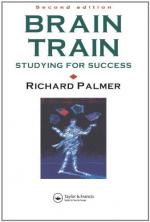|
This section contains 1,925 words (approx. 7 pages at 300 words per page) |

|
Images of the human BRAIN constructed using sophisticated computer systems have proven valuable for studying the effects of abused drugs. Nuclear medicine techniques, such as positron emission tomography (PET) and single photon emission computed tomography (SPECT), allow noninvasive studies of brain function in human volunteers by the administration of small amounts of radioisotopes. These procedures allow visualization and quantification of biochemical processes in the living brain. Functional MRI (magnetic resonance imaging) is a recently developed technique that makes it possible to construct functional brain images without radiation.
PET scanning uses radioisotopes that decay by emitting positrons (positively charged particles), which collide with electrons (negatively charged particles that surround atomic nuclei). In each collision, both the electron and positron are annihilated and energy is released in the form of two photons (quanta of light) that move in opposite directions...
|
This section contains 1,925 words (approx. 7 pages at 300 words per page) |

|


